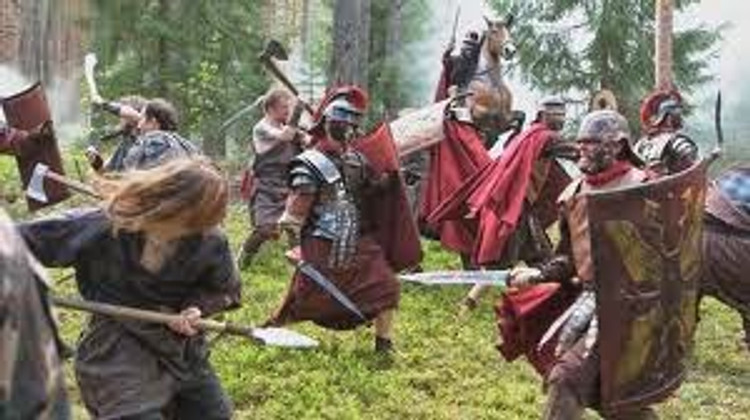Roman Armor vs. Medieval Armor
Posted by Sword N Armory on Jun 19th 2017

Armor is armor, right? It's certainly true that armor throughout the ages has had the same purpose in mind; to protect its wearer from injury. Those injuries could be many, and were inflicted by anything from flying arrows, to sword thrusts, to falling from conveyances or horses themselves, at high rates of speed.
Armor has existed as protective personal gear since a couple of hundred years before the legendary Trojan War. But when many people visualize it, they're liable to come up with the traditional metal full bodied suit used by knights in the European Medieval era of the 5th-15th centuries, A.D.
But not only knights wore armor, and it was effective well before the medieval period. Ancient Roman soldiers of all ranks utilized various types of armor throughout both the Republic and Empire. The ever adaptable Romans mixed and matched when it came to this body protection; if they liked what they saw what the enemy was wearing, they converted elements of it for their own use. Although armor was provided by the standing government as a "perk" of service, some administrations were more constrained than others by budget in equipping the troops. As a result, it wasn't unusual to see soldiers supplementing assigned gear with "inherited" pieces for reasons both sentimental and practical.
The earliest Roman armor, called Lorica Musculata, was based on what was worn by earlier Greek hoplites. This plate armor consisted of a decorated bronze breastplate, with undergarments made of cloth or leather. The Lorica Musculata was used for centuries, and many examples of it can be seen in Roman artwork and sculpture. Beginning in the early part of the 2nd century B.C., soldiers began using the Lorica Hamata or "hook armor", a type of chain mail that was tough, flexible, and "hooked" on over the shoulder. A cloth undergarment was worn underneath.
Lorica Squamata (scale armor) consisted of a cloth shirt with tiny metal "scales" affixed to it. Lorica Plumata (feather armor) was a chain mail shirt with metal scales attached to it.
Segmented armor was comprised of strips of metal attached to each other by leather. Strong and flexible, it appears to be a Roman original, and made its debut in the 9th century A.D.
Although in seems to have been discontinued after the fall of the Republic, Roman soldiers wore greaves on their left thigh only. Gladiators more commonly wore leg greaves. Some visual records show Roman soldiers wearing segmented arm protection. The tough, hobnailed sandles worn in the 1st and 2nd centuries A.D. were phased out in favor of heavy boots. Galeas or helmets varied greatly in design and appearance, but for military use, galeas offered protection for the head, neck, and sides, with an open face. Gladiators sometimes wore galeas with face grills.
By the medieval period, comfort and flexibility had been given up for full body protection in the form of full helmets with face grills, greaves, bezagaws (to protect armpits) and quisses (to protect the thigh and knee), in addition to chain mail and undergarments. Armor was purchased by the warrior. Handcrafted, often personally embellished, and very expensive, the familiar full armor could only be afforded by nobility. Non-nobility's protective body gear consisted of hoping they didn't get caught too far away from the traps and weapons of a castle or fort.
In terms of personal protection for a fighter, there was much to be said for the good old ancient days.












